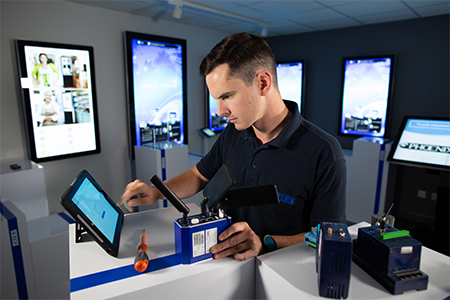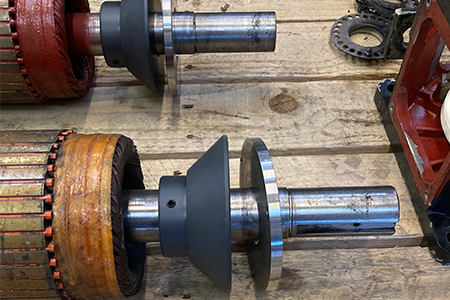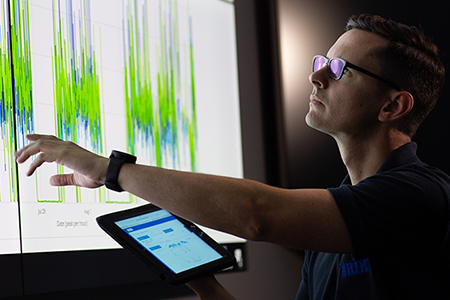In this article
Making Online Monitoring part of your maintenance strategy Part 3: When knowledge meets know-how
Over the past two issues of Know+How, we have been considering methods you can use to monitor and maintain your assets, and to achieve the key goals of any business: reduced maintenance costs, increased uptime, optimised efficiency and maximised productivity. We have also looked at how an holistic view of the data gathered will help you make more sense of – and better use of – all of it. Now, in this final part of the story, we are looking at how the information you want can provide the knowledge you need. And how know-how can turn that knowledge into the power to improve your operations.

Though monitoring ultimately delivers the benefits described above, it is only the means to an end. Between the means and the end, there’s the stepping stone of better-planned maintenance.
Better-planned maintenance helps to reduce the risk of unplanned failure. Facilitating better-planned maintenance requires monitoring. And what is the most effective monitoring method you can use? Sensors.
While an engineer’s inspections can only provide snapshots of data, a sensor can gather data almost continually, sweeping-up information at intervals of 60 - 600 seconds. This frequency means that, instead of snapshots, you have the data equivalent of a panoramic photograph, seamlessly stitched together from multiple images. The overall effect is a widescreen view that’s as close as possible to capturing the whole picture at once.
Mounting sensors on maintainable items such as motors, gearboxes and pumps will provide data on how the process is affecting the asset condition. When this is assessed in the light of historical data from the same items, it does two things.
Firstly, it depicts a trend. Secondly, when that trend is compared with known values, it makes it possible to predict when a maintenance intervention will be required.
And that is when know-how can make the most of knowledge.
Refuel or rethink?
In previous articles, we have frequently used the analogy of a car. It’s also a useful comparison as we consider the information we gather from sensors, and what we can do with it.

When the little dashboard petrol pump illuminates, and a warning tone alerts you that you only have enough fuel for 50 miles’ driving, you have two choices. You can fill up at the next available service station. Or you can ease off the accelerator and drive more economically – eking out the fuel you have left to cover perhaps 60 or 70 miles instead.
With data from your sensors, and ERIKS know-how to guide you, it’s possible to do the same with your maintainable items.
If an alert tells you, for example, that a threshold will be passed in two weeks, there may be intermediate actions you can take to increase that period to three or even four weeks. You have extended the Mean Time Between Failures, reduced downtime, reduced maintenance costs, and helped to maintain – or even improve – productivity.
Where know-how counts
ERIKS’ know-how will help you, first by interpreting the data to identify the issue, then by delivering a diagnosis, and finally by providing the solution.
In addition, the predictive element of this process ensures that maintenance is no longer reactive. Your ERIKS maintenance engineer will be able to schedule a date for the work required, and arrive as scheduled with the correct spares, while in the meantime you continue to operate your asset. And even if the issue identified is too complex for a quick solution, ERIKS’ have the in-house capabilities to resolve it.
So your maintenance parts stockholding can be reduced, your efficiency will be increased, and your peace of mind will go through the roof.
One day, sensor-gathered data will enable us – as your embedded maintenance partner – to identify issues, co-ordinate maintenance with scheduled downtime, and rectify the problem, all before you’re aware it’s happened.
That fourth instalment in the maintenance strategy story isn’t quite ready to be written yet. But in the meantime, you can contact ERIKS Product Manager David Manning-Ohren to discover more about the operational benefits to you of online monitoring, and its aims and ambitions for the future.
Monitoring in action
As the first step towards site-wide condition monitoring, ERIKS recently installed the e-Connect 3.5 online monitoring system on a customer’s Leviton 13.37 Twiner Drive Motor.
With the first running data uploaded to the ERIKS Smart Asset Management (SAM) Cloud system, the SAM dashboard registered an increased acceleration amplitude in comparison to similar drive motors on other Twiner lines.

Based on the data, the decision was made to remove, dismantle and inspect the machine. The visual inspection then revealed:
- Commutator wear
- Brush replacement required
- Unsuitable non-drive end bearing shielding
- Severe carbon contamination within drive-end bearing housing and roller bearing
- Severe contamination of motor windings
ERIKS’ Root Cause Analysis revealed carbon dust being forced through the housing backplate and into the bearing housing, as a side effect of the force vent fan’s cooling function. ERIKS’ solution was to manufacture and fit a new drive-end backplate which houses a lip seal, plus installation of a nylon ‘thrower’ to provide greater protection against carbon dust ingress.
Without online monitoring, deterioration of the DE bearing of the motor would have continued until catastrophic failure.
In case you missed out...
#ERIKS #LetsMakeIndustryWorkBetter #OnlineMonitoring #Maintenance #ConditionalMonitoring



